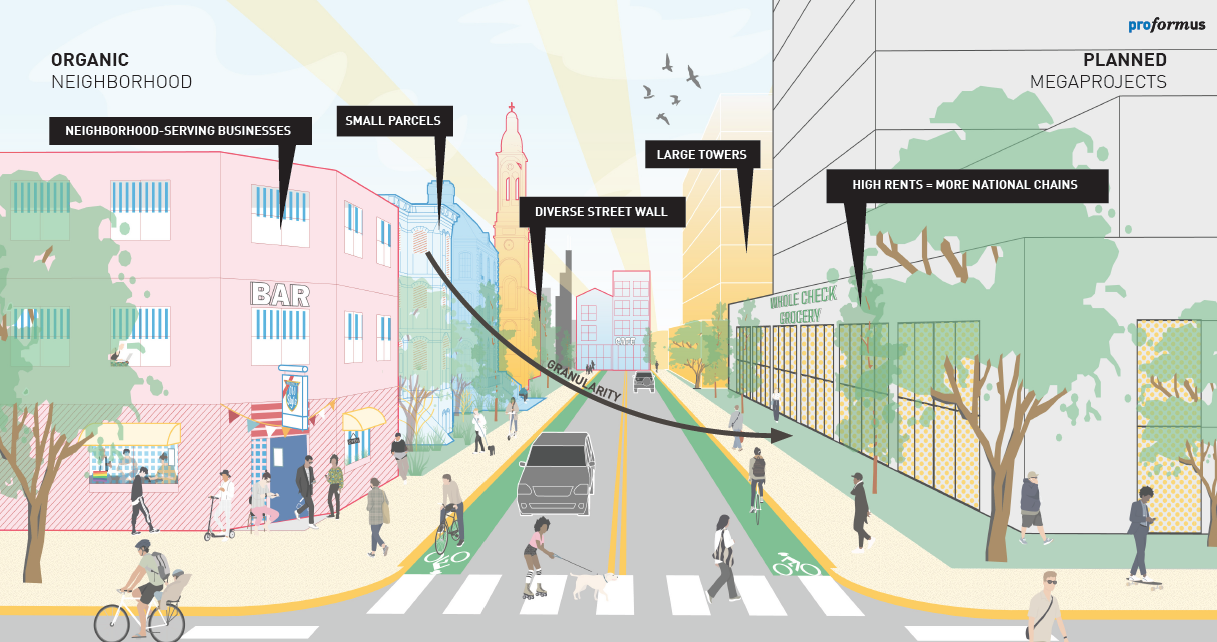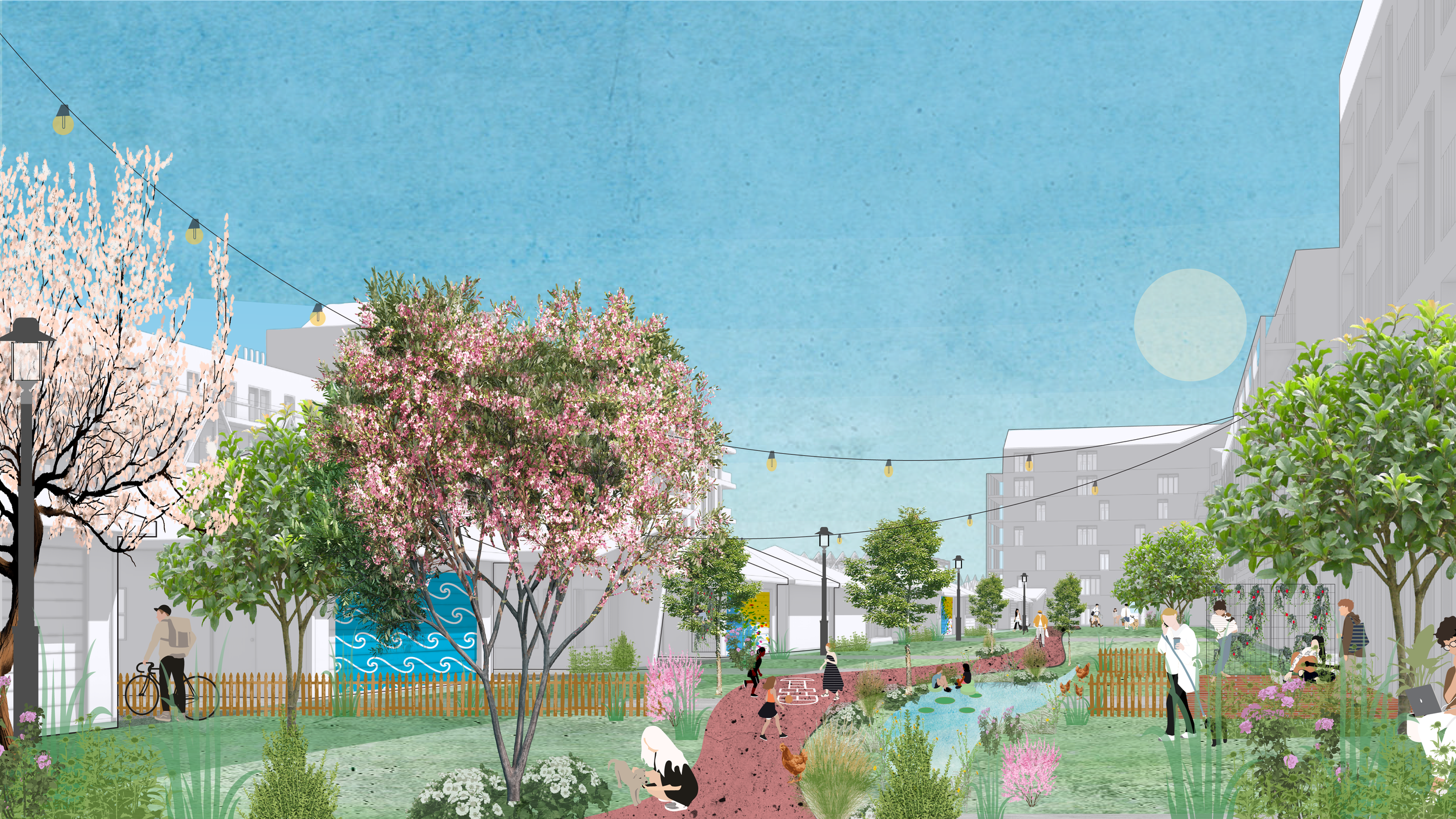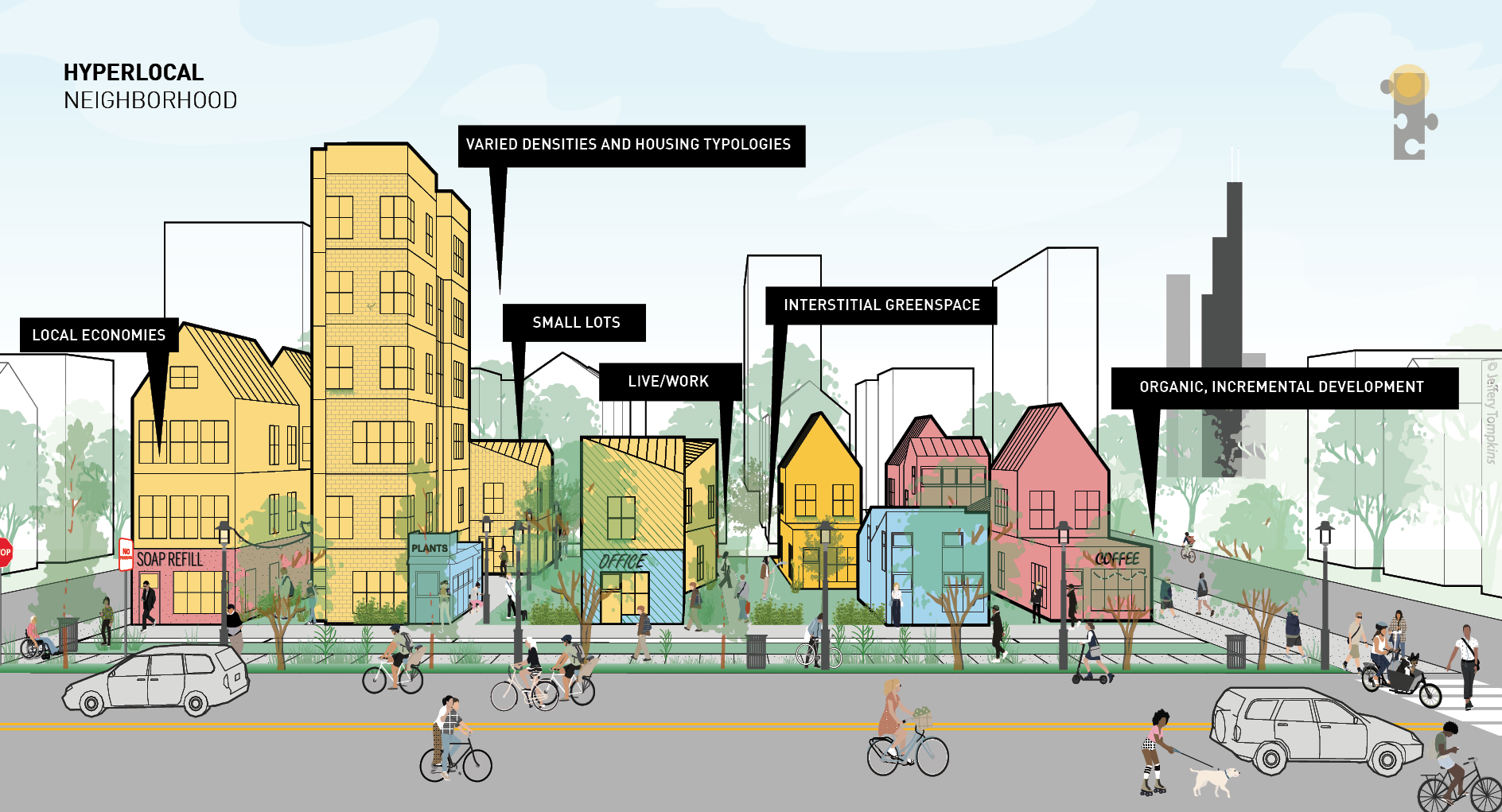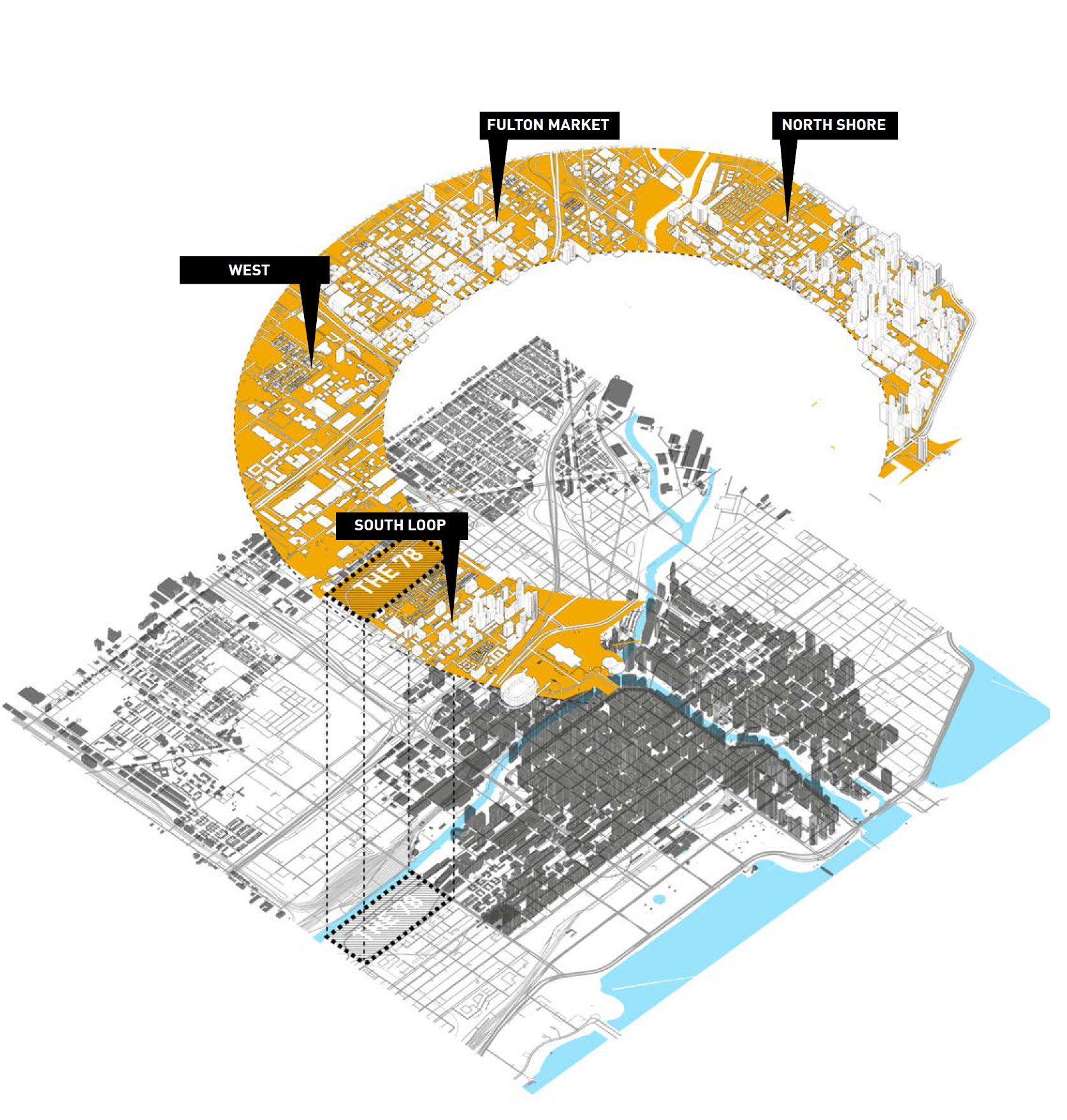



Thinking Big by Thinking Small
Chicago, Illinois
Key Services:
→ Comprehensive & Neighborhood Planning
→ Corridor & District Frameworks
→ Zoning Strategy & Policy Alignment
→ Implementation & Action Steps
Press:
Coming soon.
What→
The study challenges the status quo of the “megaproject era” and presents a pathway to rethink large-scale development through the lens of emergent urbanism and collective hyperlocalism, bridging the gap between long-term planning and immediate community needs. This approach ensures that cities evolve as adaptable, inclusive systems and designed not just for today’s challenges, but for the uncertainties of the future.
In cities around the globe, megaprojects have become synonymous with ambition and progress. However, their track record reveals a troubling legacy of exclusion, inefficiency, and disconnection. Projects like Hudson Yards in New York City exemplify a monolithic, insta-neighborhood approach to urban development, often prioritizing luxury amenities, global competitiveness, and profit margins over equitable access, local identity, and long-term adaptability. These developments frequently reinforce existing inequalities, privatize public spaces, and leave behind sterile environments that fail to reflect the complexities of organic places.
There is a key difference between the way we used to build places and the way we do now. For instance, in Chicago, traditional neighborhoods were built incrementally, shaped by emergent processes and market forces rather than blanket master plans. The city’s iconic neighborhoods grew on the backs of 25’ by 125’ parcels, subdivided from larger tracts of land. These parcels were sold to a diverse mix of small-scale investors, developers, and homebuilders, each contributing to the patchwork of the urban fabric.
The Opportunity →
What if we encouraged granular, incremental development by making it easier to get approved? Balancing the granular richness of traditional construction and the modern economies of scale seen in contemporary development requires a new approach - one that liberalizes land use and allows more innovative and creative typologies and uses. We can chart a new course—one that combines scale and efficiency with the adaptability and community-driven vibrancy of granular development.
This paper challenges the megaproject paradigm in lieu of a new, collective model that lets places go again.




